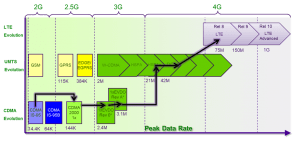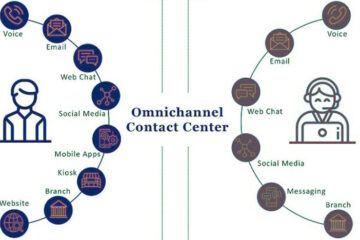I was going to write an article like this at the end of the week but Telus sent this most excellent explaination right to me… so here it is
What’s the difference between 4G and LTE?
by shishirchand
Today marks the launch of the TELUS 4G LTE wireless service in 14 metropolitan areas across Canada, providing Canadians access to some of the fastest wireless speeds in the world. In support, we address common network technology questions.
One question that many businesses ask is what is the difference between a 4G and LTE networks and devices? To answer this, it’s important to look at how networks have evolved over the years.
The network evolution
About a year ago, I wrote a post about the network evolution and why it matters to business. In it, I described how mobile technology has evolved over the years, starting with mobile data, defined as “2G” or second generation. Data speeds were low and the network supported capability for activities like text-based email. During the 2G era, Smartphones like BlackBerry and Palm started coming to market.
The network then evolved to 3G – third generation – that truly let people use the internet and applications on the go. Speeds were higher, with user experience closer to DSL speeds. This expanded the eCommerce market and allowed businesses to stay connected to their staff and their customers anywhere, anytime. Smartphones have become a must for the business. Mobile internet helps make flexible work possible.
Next came the 4G – fourth generation – an evolution that brought mobile internet to a level offered by broadband. In rural markets, mobile technology has surpassed wire line technology by offering speeds that go beyond dial-up, DSL, and even broadband.
It’s all about speed
LTE, or Long Term Evolution is the next evolution of the 4G network and brings you closer to the wireline experience on your mobile device, providing near instant connectivity. Faster speeds allow you to do more, right on your mobile device, such as attend or even host video conferencing sessions, download large PDF files, presentations and documents without long wait times or download and edit documents from the cloud.
Here are some common questions about LTE:
- When will LTE be launched in my city? TELUS 4G LTE network services are available in Vancouver, Calgary, Edmonton, Hamilton, Kitchener/Waterloo/Guelph, the Greater Toronto Area, Belleville, Ottawa, Montreal, Quebec City, Halifax and Yellowknife. Additional 4G LTE coverage areas will be announced as service becomes available at www.telusmobility.com/4GLTE
- What happens if I travel off of the LTE network with my LTE enabled device? When traveling outside of TELUS’ 4G LTE network coverage, customers will move seamlessly from TELUS’ 4G LTE to 4G DC-HSPA+ and/or HSPA+ network and vice versa, with no disruption of service. TELUS 4G LTE devices have a network indicator that will show ‘4G LTE’ or ‘LTE’ when in a 4G LTE coverage area. Most indicators will show “4G” in either DC-HSPA+ or HSPA+ coverage area. Visit the www.telusmobility.com/coverage to see interactive maps with the 4G LTE coverage area.
- Do you need an LTE or 4G device to enjoy faster speeds? In order to fully experience the faster speeds of LTE, you will need an LTE or 4G device. A number of new LTE and 4G devices can be found here: www.telus.com/4GLTE.




0 Comments